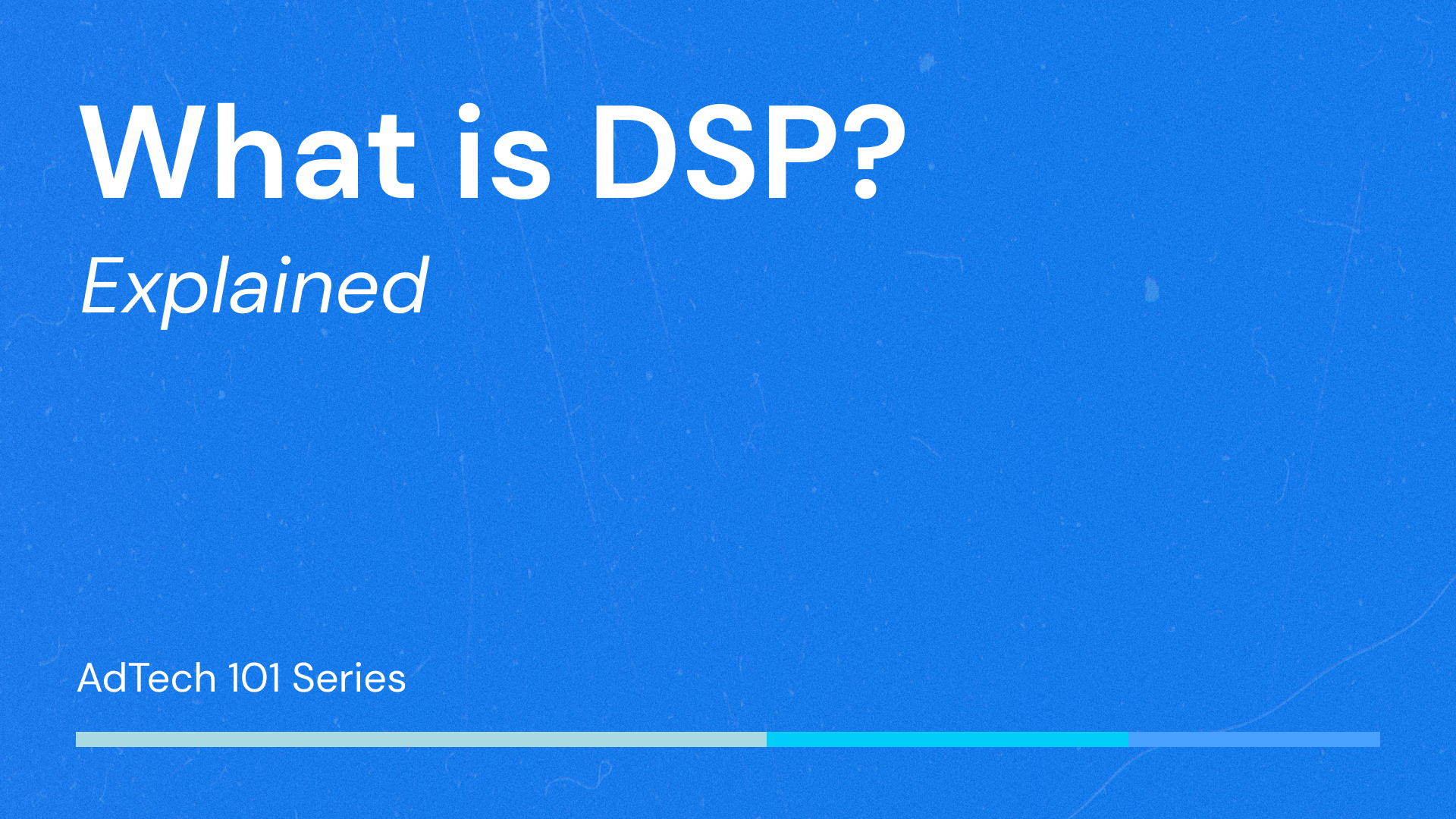Table of Contents
DSP in Programmatic Explained
What is DSP?
DSP stands for Demand-side platform and is a software platform that allows advertisers and agencies to buy digital advertising inventory across multiple ad exchanges, websites, and mobile apps in real time through a process known as real-time bidding (RTB).
How does a DSP work?
Step-by-step explanation of the DSP processes:
- Ad-inventory accumulation: DSPs gather ad inventory from multiple ad exchanges, supply-side platforms (SSPs), websites, mobile apps, and other sources. This inventory includes display ads, video ads, native ads, and other digital ad formats.
- Audience Targeting: Advertisers and agencies use DSPs to target specific audience segments based on demographics, interests, behavior, geographic location, and device type.
- Real-Time Bidding (RTB): When a user visits a website or opens a mobile app, the publisher sends an ad impression to multiple ad exchanges or SSPs through a bid request. DSPs analyze bid requests in real time and submit bids.
- Ad Serving: Once an advertiser’s bid wins in the RTB auction, the DSP rapidly serves the ad creative to the user’s device. DSPs track ad impressions, clicks, conversions, and other key performance indicators (KPIs) to measure the effectiveness of advertising campaigns and provide insights for optimization.
Self-Served DSP and Managed-Service DSP
Self-serve DSPs provide advertisers and agencies with direct access to the platform, allowing them to set up, manage, and optimize their advertising campaigns independently. Users have full control over campaign parameters, including budget allocation, targeting options, bidding strategies, ad creatives, and optimization settings.
On the other hand, companies access Managed service DSPs through a managed service provider, such as an agency or a managed service team within the DSP company. Advertisers collaborate with dedicated account managers or campaign specialists who handle various aspects of campaign setup, optimization, and performance monitoring on their behalf.
Examples of Demand-Side Platforms
Famous examples of world-known DSP are:
- Amazon DSP (Demand-Side Platform): Amazon DSP allows advertisers to reach audiences across Amazon-owned properties, including Amazon.com, Kindle, Fire TV, and IMDb, as well as third-party websites and apps.
- AppNexus (now part of Xandr): offers a robust programmatic advertising platform with advanced targeting, optimization, and analytics features for advertisers and agencies.
- MediaMath: a leading DSP that provides advertisers with sophisticated targeting capabilities, real-time bidding, and optimization tools to maximize campaign performance.
Advantages of Using DSPs for Advertisers
Demand-side platforms (DSPs) offer several crucial advantages for advertisers looking to run effective digital advertising campaigns:
- Real-Time Bidding (RTB). DSPs enable advertisers to participate in real-time bidding auctions, where they can bid on ad impressions as they become available. This allows advertisers to adjust their bidding strategies in real time based on factors such as audience data, ad performance, and campaign objectives.
- Control. DSPs provide advertisers with transparency and control over their advertising campaigns. Advertisers have access to detailed reporting and analytics dashboards, allowing them to track key performance metrics, monitor campaign spending, and make data-driven decisions to achieve their advertising goals.
- Targeted Advertising. DSPs allow advertisers to target specific audiences based on various aspects such as demographics, interests, behaviors, and other criteria. This precise targeting helps advertisers reach the right audience with their ads, increasing the chances of engagement and conversion.
FaQ
Is DSP similar to SSP? What is the difference?
Although both platforms may seem relatively similar, their functions majorly differ. Demand-side platforms engage with the advertiser side of digital advertising, whereas supply-side platforms work with the publisher side and facilitate the process of selling digital material to advertisers.
Can an advertiser buy inventory without collaborating with DSP?
No, DSPs and SSPs act as a “middleman” between advertisers and publishers. Hence, advertisers would not have a direct connection with the publishers, preventing purchasing advertising material.
What types of advertising campaigns run through a DSP?
DSPs enable advertisers to run various types of digital advertising campaigns across multiple channels and formats, including display, video, and native advertising.
How does a DSP measure the performance of the advertising campaigns?
DSPs evaluate the effectiveness of the performance by analyzing various metrics (KPIs). These measures might include impressions, conversion rate, and click-through rate (CTR)
This Article's Ad Tech terms

